powering a heater with solar panel
Hi to all,
i'm not new to gardening but i am to solar power stuff. i have tried the passive solar. I have come to realize that in vermont it does not work well. What i'm looking to do is to run a heater off a solar panel. As of yet i have not found anyone in my area that know how to hook a system up or what is needed to do this. I know that solar is still new but i think that this couls work. It anyone could tell me were to look or know how to do this please let me know
East
Comments (37)
lilydude
15 years agolast modified: 9 years agoA heater is a heavy electrical load, so you will need a lot of power. On average, the sunlight hitting the earth has an energy density of 1.5 kW per square meter. You won't be getting that in Vermont in the winter. Let's say you could achieve an overall solar array conversion efficiency of 20%, and you want to generate 1.2kW of power to run a space heater. So the total sun power hitting your photocells times 20% is the amount of electrical power your photocells will generate, which needs to be 1.2kW. You can solve for the sun power by dividing 1.2kW by 20%/100% = 0.2. 1.2kW/0.2 = 6kW. Since the sun provides 1.5kW per square meter, you can solve for the number of square meters of solar cells you will need: 6kW/1.5kW/m^2 = 4 m^2 (m^2 means square meters). In Vermont in winter, you may need to double that or more.
This assumes that the electrical power is going directly to the space heater. What if you are going to store it in a battery, and use it later, like at night? Now you have the efficiency of the battery to worry about. Let's say it's 70%. Now your solar array needs to be bigger by 1/0.7 = 1.4x, to cover the losses in the battery.
Storage capacity requirement: let's say you will need 1.2kW for 10 hours each night. Your storage capacity will need to be 1.2kW * 10 hours = 12 kW-hours. Let's convert that to amp-hours, which is how batteries are usually specified. If your battery is 12 volts, like a typical car battery, then 1 amp of current will provide 12V * 1amp = 12 watts of power, since power = volts * current. To get 12 watts for 1 hour (12 watt-hours), you will need a battery with 1 amp-hour of storage. We figured out above that you need 12 kW-hours. That's 1000 times 12 watt-hours, so your battery needs to have 1000 amp-hours of storage. Unfortunately, batteries lose some of their storage as they age, so you really need maybe 2000 amp-hours of storage, if you want to keep your batteries for a couple of years.
Since an electric heater is just a resistor, it doesn't care if you give it DC or 60Hz AC power. But if you buy a unit with a transformer or an SCR controller, it will have to have AC. Now you will need an inverter, to convert the DC from the solar panels into AC. Let's say you can get 90% efficiency in the inverter. Now your solar array needs to be bigger by 1/0.9 = 1.11x, to cover the losses in the inverter.
OK, now the bad part. What if your solar array or battery puts out 12 volts, but you need 110 volts for your space heater? There are two ways to change the voltage. One, you can convert it to AC with an inverter. The inverter might make the right output voltage, or you might have to use a transformer to get the right voltage. Your inverter and transformer will have to be rated at greater than your load power of 1.2kW. Two, you can use a DC/DC converter which will accept 12 volts in and give 110 volts DC out. The cheapest and most energy-efficient solution is to find or build a space heater that will work on your battery voltage.
It's an interesting mental exercise (at least for nerds like me), but I personally would not tackle this project. Too much work and money.
Nell Jean
15 years agolast modified: 9 years agoIt isn't that solar is 'new' -- the problem in finding a way to collect, store and distribute solar energy that is cheaper than plugging your heater into an electrical outlet has been with us for a while. All those resistors, inverters, converters, transformers and batteries are pricey, not to mention what a puzzle to assemble.
When I was a child, my mother used to set her prized Christmas cactus beside my bed where I was forced to breathe on it, to keep it from freezing in a drafty old farmhouse. Determined woman, she managed to keep tropical plants alive through impossible winters. We've not come far from her methods, yet. Passive solar doesn't work all that great here in the south, either, when the temp dips below freezing. I just plug in a heater and hope it's a short winter.
Nell
Related Professionals
Danbury Landscape Architects & Landscape Designers · Damascus Landscape Contractors · East Hanover Landscape Contractors · East Lake-Orient Park Landscape Contractors · Ringwood Landscape Contractors · Seven Hills Landscape Contractors · Wells Landscape Contractors · West Haverstraw Landscape Contractors · Wilton Landscape Contractors · Northlake Landscape Contractors · Imperial Beach Solar Energy Systems · Madison Solar Energy Systems · Maple Grove Solar Energy Systems · Rehoboth Solar Energy Systems · Wasco Solar Energy Systemslilydude
15 years agolast modified: 9 years agoI like the indoor fluorescent light garden. That way, all of the electricity goes towards heating the house, and you don't waste any.
Dan _Staley (5b Sunset 2B AHS 7)
15 years agolast modified: 9 years agoWhy don't you get an element that connects off the PV array and stick it in the water, heating it up during the day?
Dan
jacqueinthegorge
15 years agolast modified: 9 years agoWhat are you trying to grow?
If tropicals, you are just going to have to suck it up and pay the electric bill, but it doesn't sound like that is what you're doing.
If you're trying to get a jump on the food-growing season, or winter over marginally hardy plants, there are cheaper things you can try.
A seminar I attended last year showed a university greenhouse from some place like michigan that was producing hardy greens and small fruits out of season in a non-heated plastic hoophouse. They covered their growing beds with an additional layer of plastic. The rule of thumb I have heard is that every layer of plastic moves your growing bed about 100 miles south. If you are growing in pots, you could group them and rig up something - essentially, a cold frame inside the greenhouse. Adding heating mats and/or soil cables could also make a big difference.
You don't say whether your greenhouse is freestanding, but if it is, and it is sited on an east/west axis, the north wall should be solid and well-insulated.
If you have access to free/cheap firewood, you might look into that.
The cheapest thing of all is to monitor your greenhouse's climate, and grow what will take your conditions.
Let us know what you try and how well it works!
east459
Original Author15 years agolast modified: 9 years agoI have a free standing Teksupply Backyard Hobby GH and it does run on a east/west axis. But because of the lay out of the land. the sun hits the east first then and as the day wares on it hits the south side until the sun goes down.The placement was not the best but it was that or deal with water and mold. i have insulated the back side well and used crushed rock floor. i also have a raised bed inside that is 2 feet high and goes around the front and west side of the GH. i was thinking of using the soil warming cables but i don't know anyone that used them. Have you used them and what are they like to maintain? To answer your question about what i'm growing: it is veggie, annaul flower, and herbs.
also i want to thank Lilydude for the infor. I was talking to my dad about it, he looked at it and we figure out was i was going to need. the only thing was niether of us could figure out was the size and how many of the panel(s) we would need. we were thinking two 80 watts would do it but we are not sure. do you have any thoughts on this? Also i'm going to use a self made solar air heater. This was my dad's idea and found the plans online. But the difference is we're going mount it inside on the back wall and pull the air inside the GH throught it to help with the heating. I know what i'm doing is going to cost some money but i have been saving since i got the GH finished and that is will take some work. i'm also really am greatful for all the imput i'm getting and i will let you all know how it is going.East
grower_3b
15 years agolast modified: 9 years agoYou already have several 55 gallon drums full of water that were passively heated by the sun. Why not actively heat those barrels full of water with solar energy? if you do a Google search there are quite a few do-it-yourself solar hot water heaters. I did a search on the following term "diy solar hot water" and got quite a few hits. You could even use a solar panel to power a small aquarium pump. When the Sun comes out the pump would run.
jacqueinthegorge
15 years agolast modified: 9 years agoHow much a soil cable would cost would depend on your local utility rates, whether the cable is thermostatically controlled, and how high you keep the thermostat. If you are growing cold-hardy plants and/or wintering over quiescent plants, a setting of around 40-50 degrees might be plenty warm. You would have to watch your plants to know. It would certainly be cheaper than trying to electrically warm all the air contained in your greenhouse.
Since you are thinking of building a hot air collector, you could also think about running pvc or abs pipes through the soil and pump the warmed air through that. This would warm the soil, not the air, but if you also added a hoop cover to your growing bed, this might do it for your plants. The damp soil itself is a heat collector. Or follow up on the idea of running warm water from the barrels through the pipes.
No one can give you a definite answer as to how well this will all work for the plants you want to grow. A greenhouse is its own mini-ecosystem, and you just have to try different things. That's part of the fun!
hex2006
15 years agolast modified: 9 years agoHi East
I`d consider using the soil mass already in situ below the greenhouse and force excess heat that would otherwise be wasted into the ground via perf tubing and a fan.
It also works for cooling in summer :)
Its not unusual for a greenhouse to heat well above 100F in the dead of winter with a little sunshine. I find it truely amazing that people will happily waste this free heat by running an exhaust fan in winter to lower the air temp.Admittedly you still need ventilation in winter to refresh the air but it doesn`t take much in the way of vents.
I have a meager 52 tons of soil below my small ~160ft2 gh that can be influenced by 900ft3 of greenhouse air.
Admittedly soil isn`t thermally as efficient as water but accomodating the equivilent amount of water mass (at least 4000 gal in my case) with an equally effective way to transfer heat from the air to the water could prove a lot more expensive :)
Dan _Staley (5b Sunset 2B AHS 7)
15 years agolast modified: 9 years agoEast,
Here's a fun thought experiment: have you seen those solar showers they use for camping? The water in there can get up to ~120 F.
You can heat a water barrel with a solar panel or make one of your own out of refrigerator coil or black tubing, and then purchase an inexpensive pond pump to push water through tubes (PEX, poly irrigation tubing) in the soil to heat your soil in the GH. You wouldn't need to do this daily if your soil was insulated well enough, but you wouldn't want to go, say, 4 days in a row.
Follow the embedded links for ideas. My coldframe heater using only black poly irrigation tubing and gravity flow is ready to go in the ground, when I get a couple hours in a row.
Dan
Dan _Staley (5b Sunset 2B AHS 7)
15 years agolast modified: 9 years agoI just saw the message from hex, and you could easily place tubing adjacent to water tubing in the soil, and use a solar powered pump for daytime circulation of air and the water for nighttime circulation, making a relatively even soil temp.
kudzu9
15 years agolast modified: 9 years agoeast459-
Let me try to cut through all this for you. In order to have heat provided by solar panels you would need to spend thousands of dollars. Typical panels are roughly $5 a watt. I'm in Zone 8 and keep my greenhouse at slightly under 40F in the winter using an 800 watt heater that I bought for $50 and that runs pretty continuously. If I were to replace that with solar panels, it would cost $4000 for the panels and they would take up about 200 square feet of space...which is about the size of my greenhouse roof. Since you're in Zone 6, you'd need to buy even more panels.It's an admirable idea, but other approaches are more feasible and economical.
Dan _Staley (5b Sunset 2B AHS 7)
15 years agolast modified: 9 years agoActually, kudzu, you can make a solar panel for few dollars, as my embedded links above explain. No need to buy a PV array.
I'm doing a business plan, as we read, for a high school hoop house and the intent is to make a solar collector to heat the soil as a learning tool, engaging the "shop" class as a project for under $100.00. Second-hand storm windows, poly pipe, used styrofoam, discarded hot water heaters, and the separate solar-powered pond pump (2) should do it, depending upon how hard they beg people for material.
I hadn't thought of Hex's idea and am trying to figure if I can use the extra heat in the hoophouse in summer for something...
Dan
hex2006
15 years agolast modified: 9 years agoHi Dan,
I cant take any credit for the idea, this is the place to look for more info:
http://sunnyjohn.com/indexpages/shcs.htmkudzu9
15 years agolast modified: 9 years agodan_staley-
I'm aware that one can make do-it-yourself solar heaters/panels and direct heat storage devices on the cheap. I've built them myself. However, I was responding to the original poster's query which seemed directed at a photovoltaic panel and storing the energy produced in a battery. I'm not aware of cheap photovoltaic cells that would allow building an inexpensive array and producing the amount of electricity east459 appears to need.Dan _Staley (5b Sunset 2B AHS 7)
15 years agolast modified: 9 years agoI was responding to the original poster's query which seemed directed at a photovoltaic panel and storing the energy produced in a battery. I'm not aware of cheap photovoltaic cells that would allow building an inexpensive array and producing the amount of electricity east459 appears to need.
Agreed, kudzu. It is hard to tell whether they have a solar panel already or what the situation is.
Certainly if you are going to invest in a single panel of, say, .5 kW or even 1 kW, the cost is problematic (even with utility rebates and tax writeoffs), and making your own for such a small space (and insulating underground) might be a way to go.
Altho I'm intrigued at the idea of passive heating a barrel and solar powering a little pump to push the water around in pipes. A black barrel and a pond pump ought to raise the ground temp 3-5º if you can get the water up to a decent temp after circulating the water thru pipes...
Dan
hex2006
15 years agolast modified: 9 years agoDan
The surface area of the barrel will limit the energy you can collect. Assuming a 200L barrel has 1m2 area and you have 6 hours of direct winter sun, the water may gain 14F excl losses :)Dan _Staley (5b Sunset 2B AHS 7)
15 years agolast modified: 9 years agoHex,
That is similar to what I get on a smaller scale on sunny days (~4-7º some sun and less mostly cloudy - albeit mostly sunny here as opposed to where you are).
And if you have say, 125m of 2cm dia tubing in the ground for that size greenhouse, the tubing (PEX, poly) is only ~ 1/50 the vol of the barrel. It is possible to transfer a good portion of that heat to the soil with a small solar pond pump [provided ground is insulated]. Do that 4x/week and you have easily gained enough heat to make a nice difference. Unless there is something major I'm missing somewhere (willing to listen to dissenters).
I'll let you know how this (smaller) system in my new cold frame - I'm eating baby lettuce now and radishes by the weekend with no supplemental heat in another cold frame, at 5500 ft in Colorado, and waiting for results in new cold frame with this idea installed.
Dan
hex2006
15 years agolast modified: 9 years agoHi Dan
At that altitude you should get plenty of clear days and winter sun.
There are far too many variables involved to get remotely accurate figures but as a hypothetical exercise its still fun to try :)I`m old so i`m allowed to mix and match imperial and decimal units :) By my reckoning if the tube is 1/2" bore, 125m of it will hold around 204L, the effective surface area in contact with the soil is about 85ft3.
Disregarding the tubes wall thickness acting as an insulator the tube will transfer 85btu/hr for every degree of temperature difference between the soil and the water.
Soil is hugely variable but lets say 1ft3 weighs 80lbs and
raising the temperature of 1lb takes 0.3btu, so assuming you can evenly heat 1 ft3 of soil you`ll need 24btu to raise the temp by 1 degF.
By that score, the 125m of tube could effectively raise the temperature of 3.54ft3 of soil by 1F for each degree of temp difference between the water and the soil.Dan _Staley (5b Sunset 2B AHS 7)
15 years agolast modified: 9 years agoHi Hex:
I definitely follow your mix and match special , and for a 125m length of 2cm ID PEX tubing I get 49 litres (not 4 litres as I wrote above - I didn't carry a decimal above, I went on-line this time - maybe I'm too old for manual calcs anymore). In my mind poly pipe is better as the walls aren't as thick, altho we use PEX here to melt ice off our driveways (well, the rich do anyway).
Nonetheless, this means the barrel is ~4x the volume of the pipe, so it should be easy to maintain pipe temp and transfer to soil, and maintaining this for several weeks should get soil temps up where cool seasons like to be. I'll go back and look at my numbers again maybe after the child is in bed and see if I can calculate how long it would be to heat east's GH so they can sow in Feb.
Thank you for the brain stimulant!
Dan
hex2006
15 years agolast modified: 9 years agoI guess old age is catching up with me, your figure for the pipe volume is correct. With 20mm bore tube i make it 39.28L for the 125m length.
There is a typo in the pipe area calculation too.
"the effective surface area in contact with the soil is about 85ft3"..it should read 85ft2I may have to visit the opticians :)
Dan _Staley (5b Sunset 2B AHS 7)
15 years agolast modified: 9 years agoOK, I see that:
currently East has a GH with ~ 78 ft^3/2.2 m^3 of growing bed. We want soil temps around 50F/10C.
We have a 208l barrel. I say we use 1/2 in/1.25cm poly pipe, which is roughly 156 ft/47.5 m of pipe with a volume of 5.8 l and surface area of 25.0 ft^2/634 cm^2, holding 5.8 kg water.
Let us presume good growing soil is 75 lb ft^3 (78) = 5850 lb/2659 kg.. So we need 150 BTU/ft^2 (78) 11700 BTU to warm our bed one degree. We have a 55 gal/200 l barrel, and let us say the sun can warm the barrel average 10ºF/day that gives us ~4600 BTU (say 4500), which is ~.39º F. So losing half of that to air and ground, we get .19ºF/day. So in a straight line increase, no change in gain or loss, we take ~11 days to heat the soil 2ºF. So in a month in this scheme, we get ~5º-ish F for the cost of a small solar pond pump (~50.00) and some 1/2 in poly and fittings (30.00).
Will this be enough to heat the whole GH? No. You'll need supplemental, but that will cut your losses to the air and keep your soil nice and toasty for a fun weekend project and a C note, and if the inlaws stay too long, you can show them the setup and explain all the details ;o)
----
Soil warming cables, as asked upthread, are another option, they run about 3.5-4 W/linear foot (lf). You want ~1.5-2 lf per ft^2, so that is 2(78) 156 lf of cable and 546 W/hr or 5+ lamps at non-CFL loads. You'd need 2 panels of 200W PV array to run to make work (not including heating the air in your greenhouse). So two hours overnite is a kWh.
So to heat the entire GH, not economical. To keep the soil warmer, I wouldn't do cables unless my juice was cheap. If your utility doesn't have a great rebate program for PV, not sure that will pay either, as shown above, and knowing how many BTU it will take to heat the rest of the GH air.
Dan
east459
Original Author15 years agolast modified: 9 years agodan,hex and others,
thank you for all the input. i wish i had the brains to figure out the things you two have. i guess i should have paid attention more in science class, lol. i have come to realize that solar is not economical as it sounded. i talked to a friend that is a electrician and we figure out that i would need 7 to 9 panels with a bank of 6-8 batteries to run heater. i really don't have the space and 4500 dollars to play with. i guess i'll let someone else take that route for now. so what i am considing is this: a thermal hot air system to help the heater so it doesn't have to run all the time.I think it would be an asset i am also going to use a think fabric to cover the door and vents at night to help with heat loss and i'm going to use a small row cover to help with night time heat as well. the solar water sound great but how much is it going to help and how big does the boxes need to be, to help heat the water. I have seen what you posted dan and with was one 55 gal barrel but that was in a demo video and talked nothing about it. i am going to leave the barrels but i don't have alot of space left to work with. i did talk to my local nursery and they are not sure using soil cables here in Vermont, they felt it wouldn'y be a good route for me since my raised beds a 2 feet tall and 2 feet wide, it would take alot of enegry to keep it heated as you stated dan. i do know this from my electricain friend that a heater that is 220 takes less enegry to run. i can't tell you why that is but that is what he said. i'm am going to be putting all this together in the next week and with all the i have going on somethings got to work, right.hex2006
15 years agolast modified: 9 years agoHi East
As you have raised beds already it would probably bequite easy to install some perforated drainage pipe and drive the greenhouse air through them via a fan controlled by a differential thermostat.
Using the pv to power a fan will provide a much greater heat input per watt of power generated than by using the electrical power to heat the soil directly.With the small soil volume it may be a good plan to include a soil thermostat to prevent the beds from overheating.
Dan _Staley (5b Sunset 2B AHS 7)
15 years agolast modified: 9 years agoHi East:
220 (from PV) takes less energy because it is easier to push electrons around in the wire - Europe is powered that way, and there is less waste overall (I lived there and could see the Milky Way at night).
Anyway, yes, PV is expensive up front. 7-9 panels is a lot of power and should be way more than what you need to run a heater in a GH. Nonetheless, if you don't have a couple panels now, I wouldn't recommend buying some just for a GH unless your power company has rebates and you can use the power to run your house appliances as well.
Dan
lilydude
15 years agolast modified: 9 years agoI'm not buying the 220 argument. If you have lousy wiring with lots of resistance, you will lose a little power in the wiring. For the same load power, if you double the voltage, you halve the current. Since the line loss is a function of current, you will reduce your wiring losses by going to 220. If you have decent wiring, the difference will be insignificant. Why? Because the resistance of your wire is almost nothing compared to the resistance of the load (heater or whatever).
Also, what if most of your lousy wiring is in the greenhouse? Where does all that "lost" energy go? It warms up the wires. The wires lose that heat into the greenhouse. Therefore, it's not wasted energy. If most of the losses occur outdoors, then the energy goes into heating the universe, and is lost.
As soon as you go from 110 to 220, the cost of the installation and the fixtures goes way up. There is only one reason to go to 220: you need more power than you can get from a 110 circuit or 110 heater. For example, you can buy a 4kW electric space heater that runs on 220; you can't get one that runs on 110. On the other hand, items that run off 220 are usually pretty nicely put together, and last a long time. Stuff that runs off 110 may or may not be junk.
hex2006
15 years agolast modified: 9 years agoWhy would the installation costs increase?
If you go from 110 to 220 the cost of the cable should presumably be less as it only needs to carry half the current for the same amount of wattage :)lilydude
15 years agolast modified: 9 years agoOoh, I hadn't thought of that. So I guess we'll save even more money if we go to 480 volt 3-phase. Now the current is just about nuthin'.
East, don't pay any attention to this. It's just electrical humor.
Dan _Staley (5b Sunset 2B AHS 7)
15 years agolast modified: 9 years ago220 up front will better cover your start-up amperage needs for any electric motor/heater. And it is more efficient in the same size wire (fire hazard). And you'll save money on a converter if you can find a heater cheap.
I was constantly amazed when I lived in Europe why the US doesn't use 220. But I'm an amateur astronomer and I like seeing the stars at night.
Nonetheless, this doesn't change the fact that PV panels are costly for the size GH that East has, and if they can't get them used/cheap/freecycle, then you have to look at vacuum tubes and water heating, and we're back to the piping in the ground bit. Just a thought.
Dan
Dan
east459
Original Author15 years agolast modified: 9 years agoI'm sure you are going to laugh at me but what is vacuum tubes and what do they do for heating?
Not to chance the subject but i was on another forum and they were talking at cheap seed starting heat mat. Most of them were taking Xmas rope lights (indoor/outdoor use)and putting them into sand ( just enough to cover them) and then setting the flats with potting mix and seeds on top of the sand. This was to help heat the soil the seeds were in. Theses light were to help maintain 70-80 degree needed to germinate seed. What i want to know is can these rope light really put out that much heat? They just seem so small and inefficient to me. and maybe this is a down right stupid thing to be think but if those rope lights work like they say. why couldn't i used them in my raised bed (like the soil cables). I'm only going to primely use the raised bed to start seeds in because i can't grow in them in the winter. Does my thought seem WAY out of this world or is it workable.East
Dan _Staley (5b Sunset 2B AHS 7)
15 years agolast modified: 9 years agoI'm sure you are going to laugh at me but what is vacuum tubes and what do they do for heating?
Nope.
Some call it 'solar hot water'. I have a buddy in Eastern WA [sunset 3b, USDA 5b] who has vacuum solar tubes wired into barrels in his GH, and the heat of the water keeps it from hard freezing. He's not hard core yet (until the next time I visit and set up the inside for him), so I don't know how far he's pushing it. I'm sending him specs to use PEX/poly underground (much like what I wrote above) for year-round use, but he's busy with work and not sure he can get to it yet. Nonetheless, solar hot water is still an expense.
WRT the rope light thing, interesting. I don't use heat mats to start seeds, I put my lights in a wooden box, cover the box and capture the heat that way, which is what I think is happening with the rope lights as well - the trays are covered so that the heat the lights put off is not lost to the air. Just a thought.
Dan
acutajar
15 years agolast modified: 9 years agoI have never actually powered a heater with my solar panels but I should try it out some day. Not only can you save money if you create your own renewable energy, the good thing is that if you create more energy than you use, your power company will actually pay you!
rebeccaasmit
13 years agolast modified: 9 years agoNot a bad option must admit that as powering a heater with solar power which not tremendeously helps in saving electricity
phils_garden
13 years agolast modified: 9 years agoI'be been researching solar for decades and I could never justfy the expense. I would think a solar hot water system would be much less expensive. Has anyone tried this?
I'm in the early stages of planning myself and will probably to with a manufacured 8x16 GH model. It will have to be rigid and mounted to a concrete floor due to high winds, (100 mph wind zone).
Since my home is radiant heated, (my own design), I thought I would embed pipe in the GH floor and use a low cost pool heater black plastic collector. Add a small solar panel I have laying around and a DC pump and I would think that should do the trick.
Pool collectors are only $225 or so, far cheaper than a solar panel alone. Fill the system with etheline glycol and is seems pretty fool proof.
Probably need a cheap expansion tank as well, I'm thinking the whole heating system cost could be under $500. I'd still use a plug in heater for back up.
Any thoughts on this?
marthacr
13 years agolast modified: 9 years agoeast459:
I'm interested in how you have worked out things in your GH. Have you figured out a system to make starting seeds in your GH feasible? What about turning your bed into a hotbed with fresh manure, then covering it with plastic or remay?
solarpanel12
13 years agolast modified: 9 years agoit will be better if you can make these solar panels at home itself.
if along with powering the heater you are also looking for the DIY techniques on how to make solar panel then you should make a relevant search.


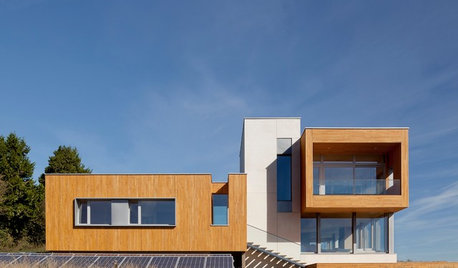

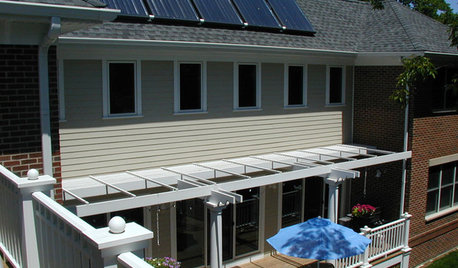
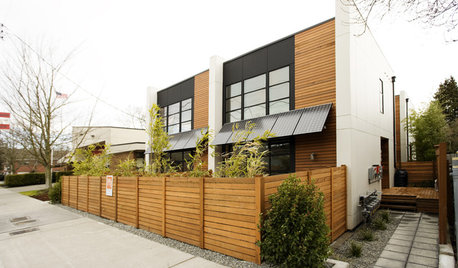
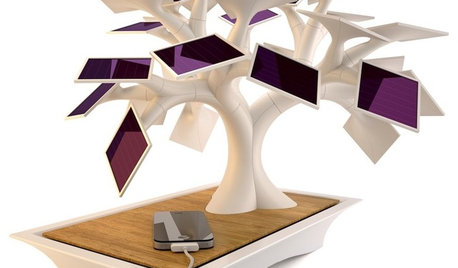
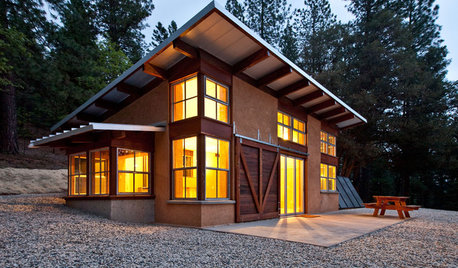
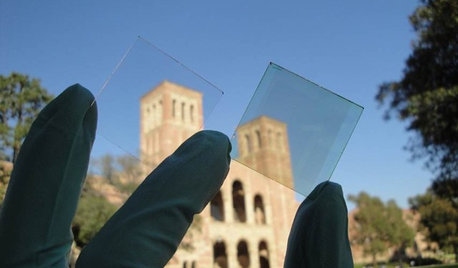








east459Original Author